2025 Gorilla Trekking in Uganda - Packages, Cost & More
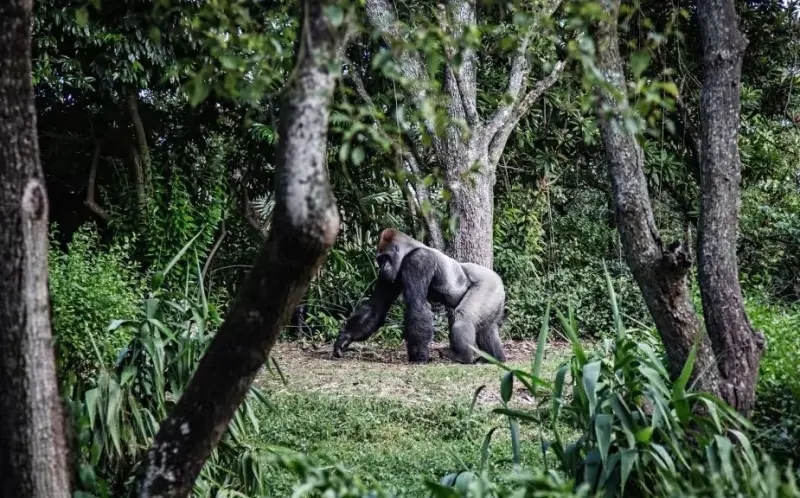
Imagine this—a daunting forest covered in mist dares you to enter its depths. Every step is watchful and slippery even; your senses heighten as you trek through steep slopes and dense vegetation filled with the sounds of the jungle. A fleeting shadow catches your eye. Was that a …? Your heart pounds as you momentarily lock eyes with a majestic mountain gorilla, exhilarating! A moment when you truly feel connected to nature’s raw, untamed beauty.
Welcome to gorilla safari in Uganda where adventures are as enriching as they are thrilling. This blog will serve as your compass, guiding you through every step of this life-changing journey. We’ll traverse through the dense foliage of information, cutting a clear path to help you plan and execute a befitting gorilla trekking safari in Uganda.
Plan Your Gorilla Trekking Holidays With Us
For the best gorilla tours in Uganda, we invite you to contact us via phone or WhatsApp at +254-704-532-105. You can also connect with us via email at safarioffers@kenyaluxurysafari.co.uk or safarioffers@ajkenyasafaris.com.
Our Senior Consultant, James Gatheru, is on hand to help you personalise your gorilla safari and maximise your experiences.
A Peek Into Gorilla Treks in Uganda - Photos by Our Clients
Discovering the African Gorilla
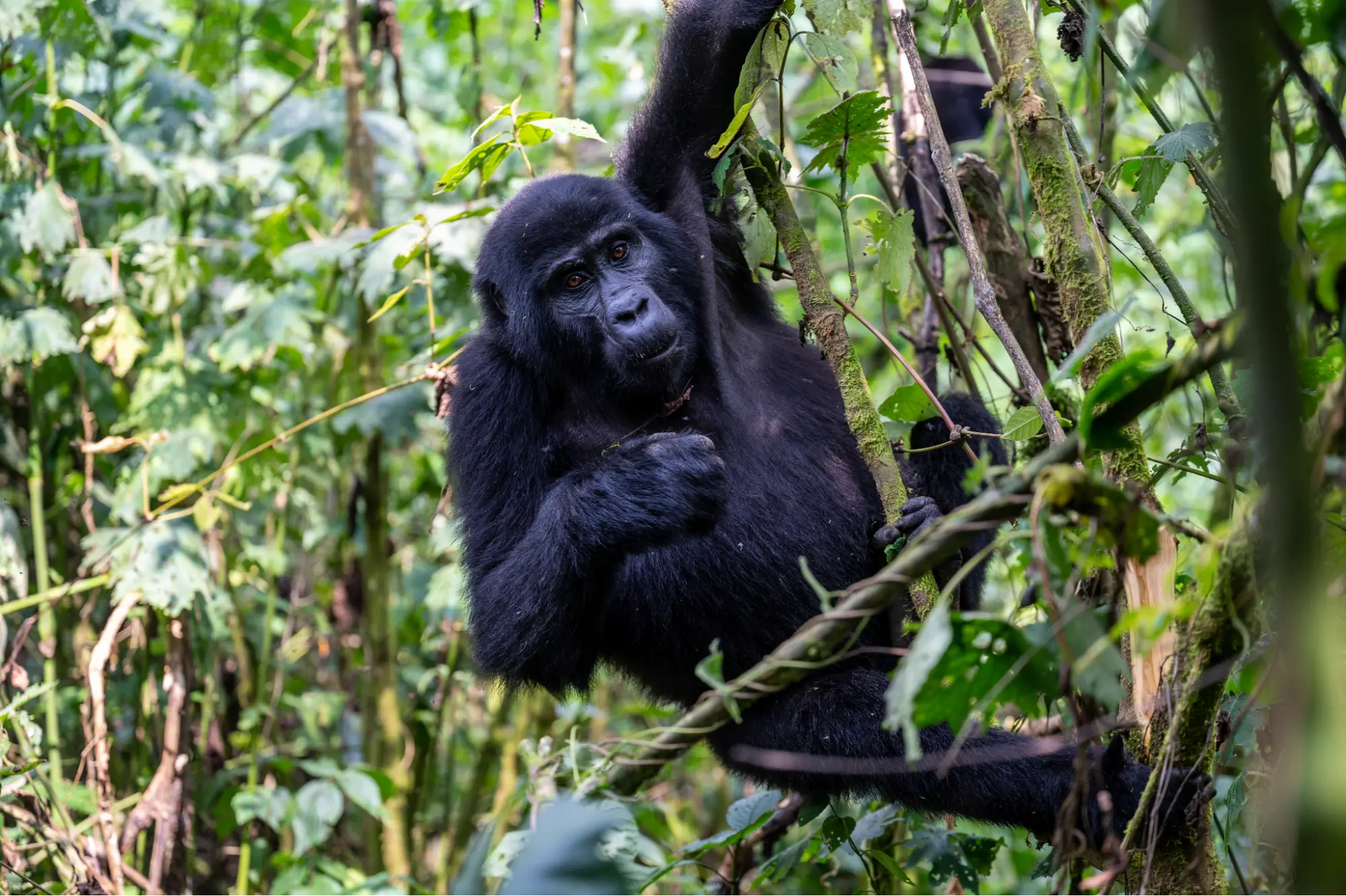
Gorillas fall into two main species—Eastern and Western Gorillas. Eastern Gorillas are further divided into Eastern lowland gorillas and Mountain gorillas. The Western Gorilla also has two subspecies-Western lowland gorilla and Eastern lowland gorilla.
Lowland gorillas are small and covered in brown-grey coats and inhabit the Equatorial forests of the Democratic Republic of Congo and other parts of Central Africa. If you’re in the DR Congo, you can spot them in the Kahuzi Biega and Odzala-Kokoua National Parks.
Mountain gorillas are larger and have blacker coats. Despite their size, Mountain gorillas are calmer and more peaceful than their lowland counterparts. Mountain gorillas prefer dense jungles and high altitudes and can be spotted in the mountainous ranges around Uganda, DR Congo, and Rwanda.
Uganda hosts half the world’s entire gorilla population, with the remaining half split between Rwanda and the Democratic Republic of Congo. The Uganda gorilla can be found in Bwindi Impenetrable National Park and Mgahinga National Park. Rwanda gorillas can be seen in Volcanoes National Park while DR Congo’s gorillas thrive in Virunga National Park.
Difference Between Gorilla Trekking and Gorilla Tracking
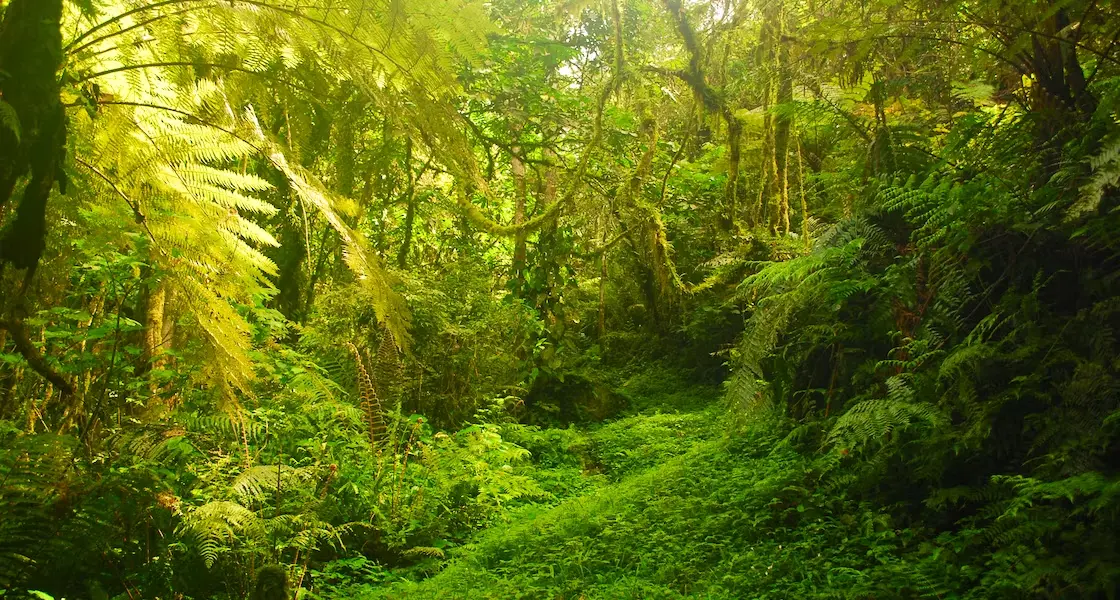
Gorilla treks are the highlight of safaris in both Uganda and Rwanda and you’ll find the phrases Gorilla tracking and trekking being used interchangeably. Both involve hiking up dense forests such as Bwindi forest or Rwanda’s Volcanoes National Park. They are physically demanding but also immersive and make for up-close encounters as opposed to the usual game drives.
Gorilla tracking is conducted by expert park rangers and researchers. They track down and locate a specific habituated gorilla family based off their last known location and feeding area. Gorilla tracking is done for various reasons including research purposes, census, and to ensure visitors have a greater chance of seeing gorillas when they come into the forest.
With gorilla treks, visitors venture into the dense forests of Bwindi National Park and Mgahinga Gorilla National Park with the help of expert park rangers to look for mountain gorillas. To make mountain gorilla trekking safaris successful, the rangers communicate with trackers so they can find these creatures easily
What is Gorilla Habituation?
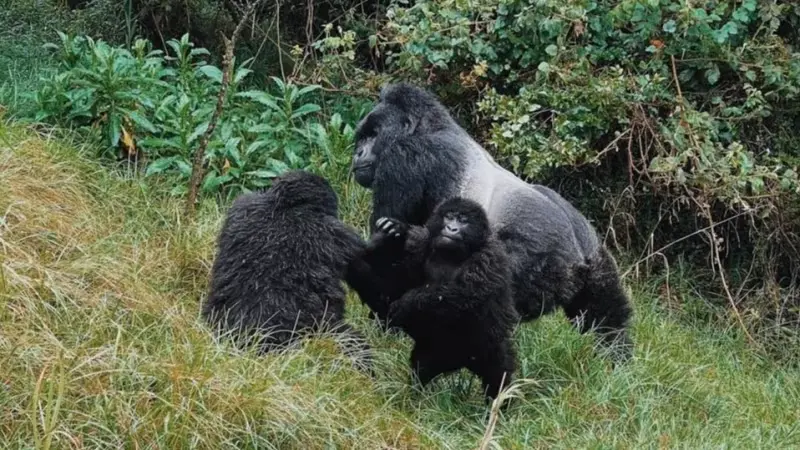
Gorilla habituation is a slow process (can take between three to five years) of introducing wild mountain gorillas to human sight and presence. Keep in mind that gorillas are wild animals. They are extremely powerful, may get angry at the sight of humans in their space and even injure them.
Through gorilla habituation rangers and researchers spend a short amount of time with the gorillas daily while maintaining a specific distance. This ensures they don’t step into the gorilla’s comfort zone and anger them. Over time, the rangers and researchers reduce the distance between themselves and the animals until they are certain that the gorillas are comfortable with human presence among them.
Thanks to habituation, researchers can study the animals and care for them. In turn, the primates get used to seeing people in close range and still go about their business. When you sign up for a gorilla habituation experience you get to spend more time with the primates to understand their behavior as well as social dynamics. Not to mention the opportunity to take incredible photos.
A gorilla habituation experience costs more than standard trekking since the latter only grants you an hour’s worth of time to observe the primates. With a habituation experience permit, you can have up to four hours with them.
Engaging in Gorilla Adventures in Uganda
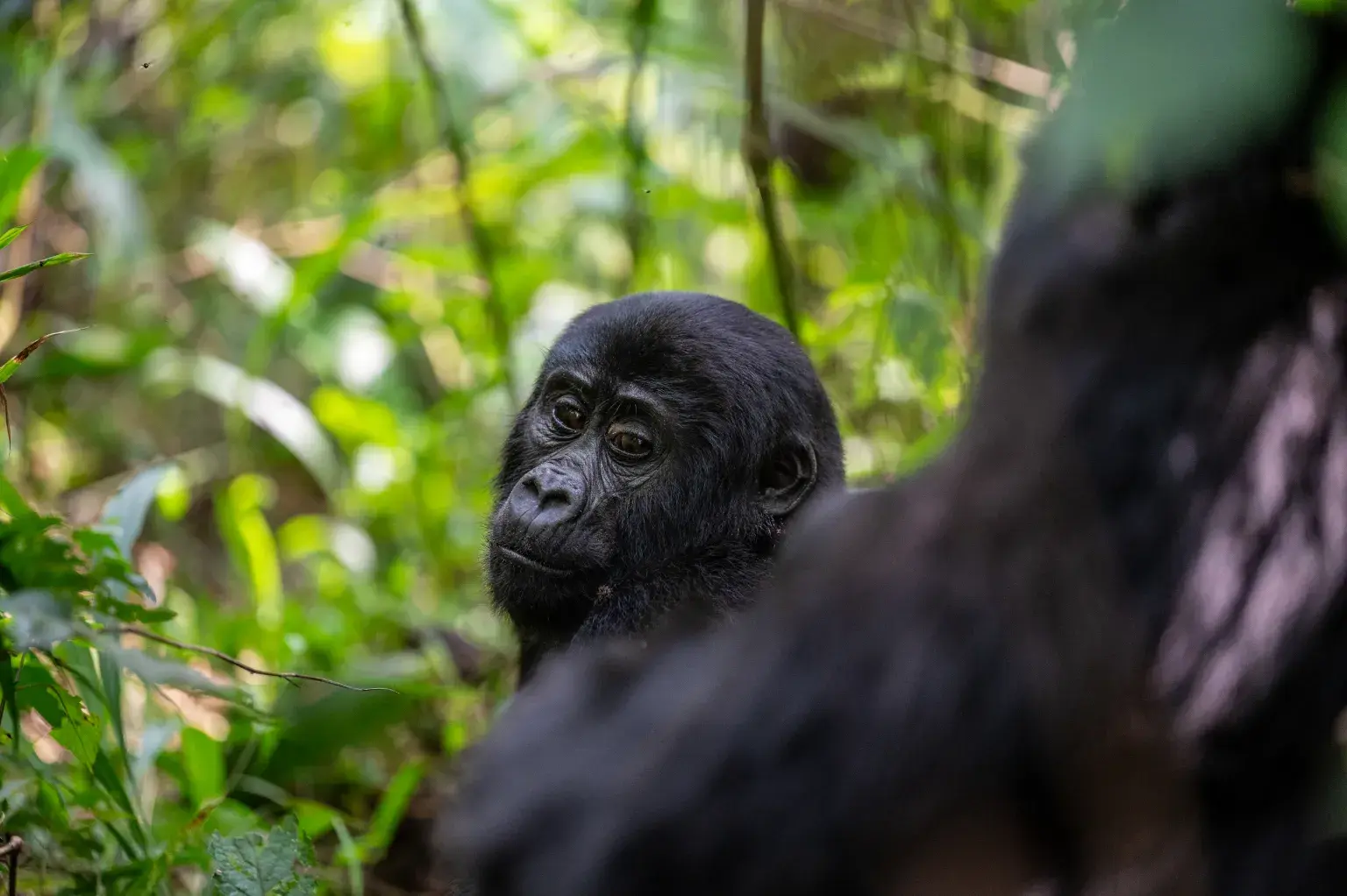
The largest population of endangered mountain gorillas in Uganda are found in Bwindi Impenetrable National Park which makes it a prime location for gorilla tours. Mgahinga National Park is an excellent alternative to view gorillas but it has fewer habituated gorillas.
Nevertheless, Mgahinga presents an opportunity for you to enjoy golden monkey trekking. Like mountain gorillas, golden monkeys are also endangered. These monkeys with their striking golden fur offer a vibrant spectacle that’s as delightful as it is unique. They are primarily found only in the bamboo forests of Mgahinga in Uganda, Volcanoes National Park in Rwanda and Virunga & Kahuzi-Biéga National Parks in DR Congo. Golden monkey tracking in Uganda is available year-round, making it a great addition to your adventure, regardless of when you plan your trip.
Being in such proximity to these majestic and intelligent creatures is awe-inspiring; an incredible mix of fear, excitement, and shortness of breath. You’ll watch them communicate (in grunts), feed and even fart. Juveniles dart around their elders and play just like we do.
Both Bwindi Impenetrable National Park and Mgahinga are fabulously scenic. Bwindi is particularly beautiful and enigmatic. You’ll come across various viewpoints where you can enjoy the rolling mountains before you. You’ll leave refreshed and relaxed, and gain a whole new appreciation of the majestic Uganda gorilla.
Planning Your Gorilla Trek: Permits, Parks, and Preparation
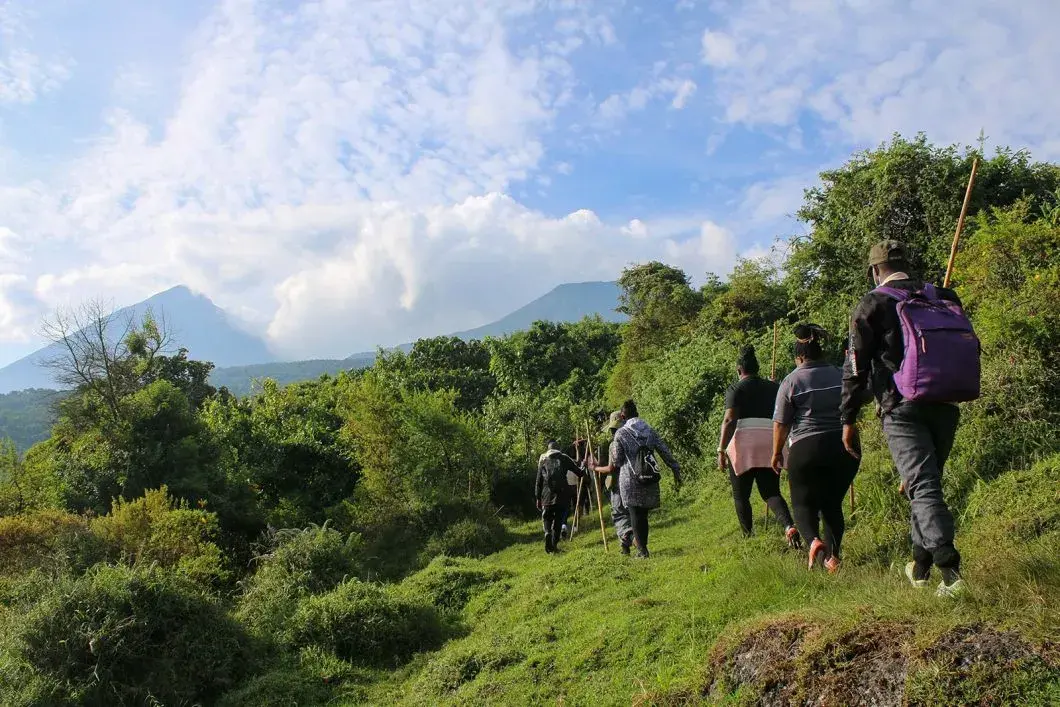
Organizing your gorilla trekking adventure is an adventure on its own. It involves acquiring gorilla permits, selecting your preferred national park to spot the primates and putting together the necessary gear. Each of these steps is critical to ensuring a successful and memorable trek.
Although the permit process may seem challenging, with appropriate guidance, it could be easily managed. The next crucial step is selecting your national park destination. Your choice between Bwindi Forest and Mgahinga Gorilla Park will shape your trekking experience, as each park offers unique landscapes and experiences. Finally, you need to gear up for the trek, equipping yourself with the right clothing and tools to navigate the forest and enjoy your encounter with the mountain gorillas.
We will examine each of these steps in more detail, beginning with the gorilla permits process, to ensure you are well-prepared for the adventure.
Navigating the Permit Process in Uganda
Obtaining gorilla permits is the initial significant step towards planning your adventure. At the time of writing this, a gorilla trekking permit is priced at $700 while a gorilla habituation experience permit goes for $1500. And you can book one up to two years in advance. This permit grants you the privilege of observing gorilla families in their natural habitat, an unforgettable experience that justifies every dollar spent.
Tour operators in Uganda play a significant role in obtaining these permits. These operators typically acquire up to 80% of the permits for a two-year period leading up to the date of trekking. You’ll want to collaborate with a trustworthy operator to eliminate many hassles and guarantee your spot on your preferred trek dates.
Selecting Your National Park Destination
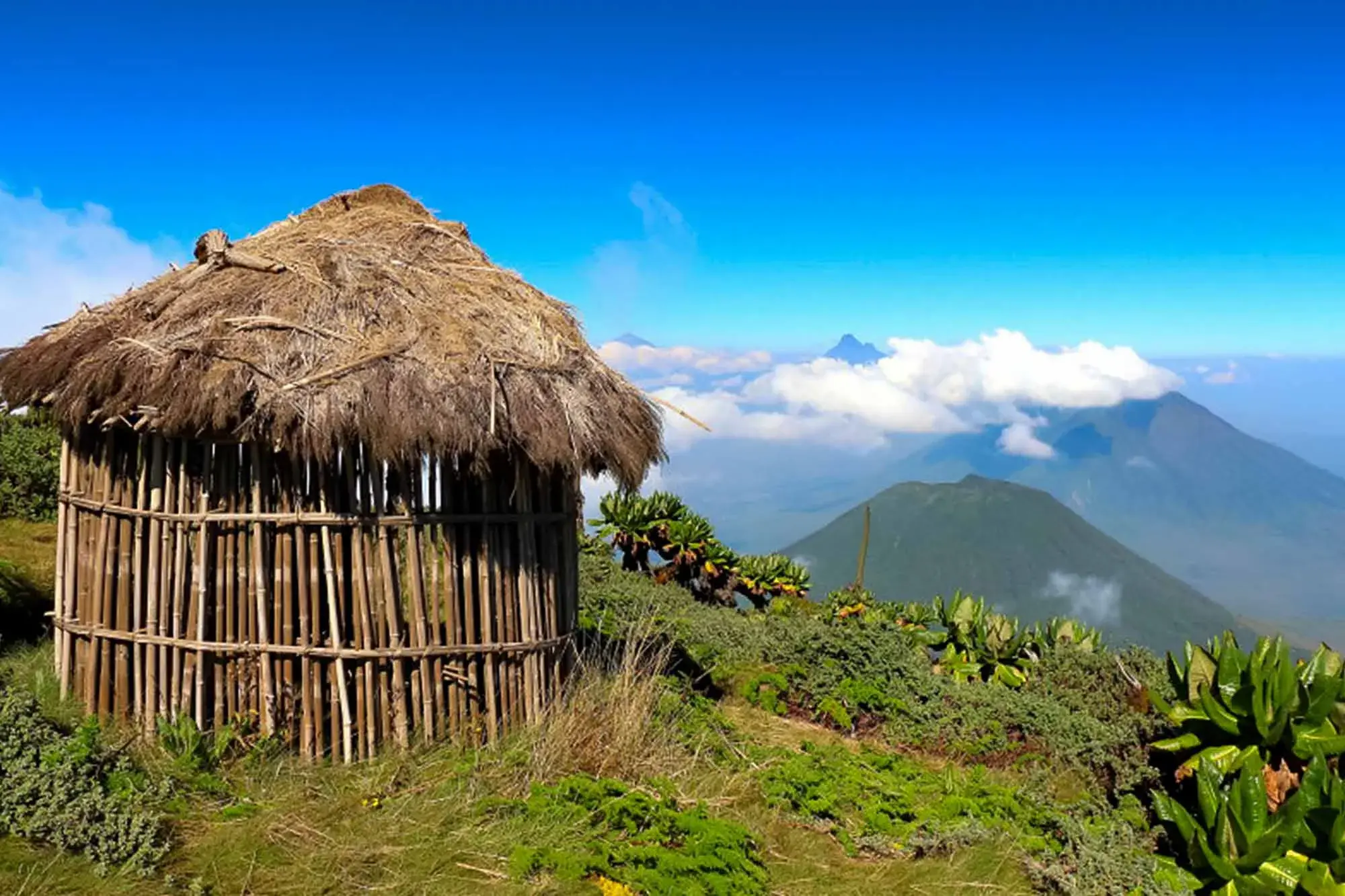
Choosing the right national park for your adventure can significantly enhance your experience. As mentioned earlier, Bwindi Impenetrable National Park has more habituated gorillas which increases your chances of hanging out with one.
It’s also home to several other primates including the black-and-white Colubus, Red-tailed monkeys, Blue monkeys, Baboons, and Chimpanzees. You can combine your gorilla trek with chimpanzee trekking in the Bwindi forest.
The Mgahinga Gorilla Park is another gem where you can find gorillas as well as the endemic golden monkeys which thrive in the bamboo forested areas.
Gearing Up for the Trek
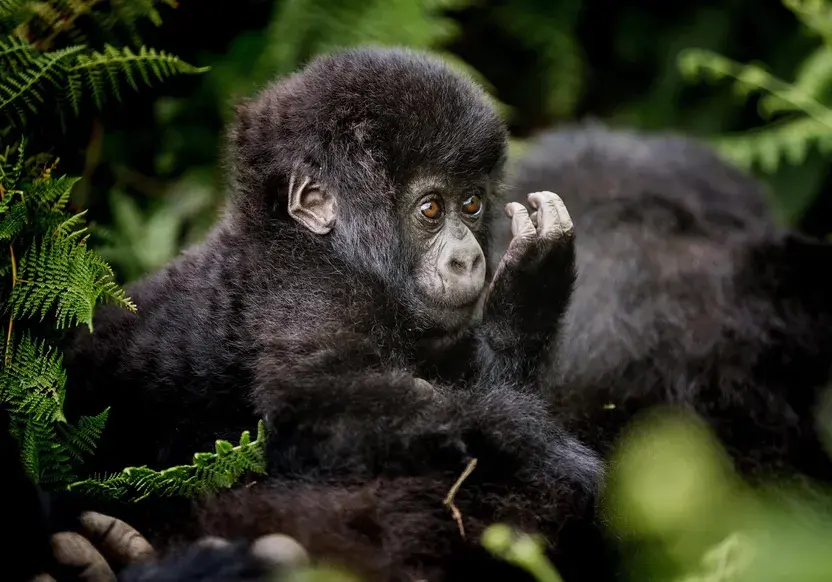
As you commence your gorilla trek, you are venturing into a wild and magical world. To maximise comfort and protection on your trek through the forest, we recommend packing the following items:
- Waterproof hiking boots
- Warm layers of clothing
- Clothing suitable for wet weather
- A lightweight jacket
- Gloves
- Long-sleeved shirts
- Trousers
- A walking stick
Lightweight hiking boots will support your ankles as you hike through strenuous terrains and Bwindi Impenetrable National Park has plenty of those. Its flora drapes over slippery valleys, ridges, and plateaus. Heavy boots can make the hike very challenging.
Long-sleeved shirts can help protect you from stinging insects, ants, or tree branches and vines that may tear your skin as you pass by them. While you are at it, bring along a pair of binoculars so you see some of the distinct bird species that live there.
Accommodations and Amenities: Staying Near the Gorillas
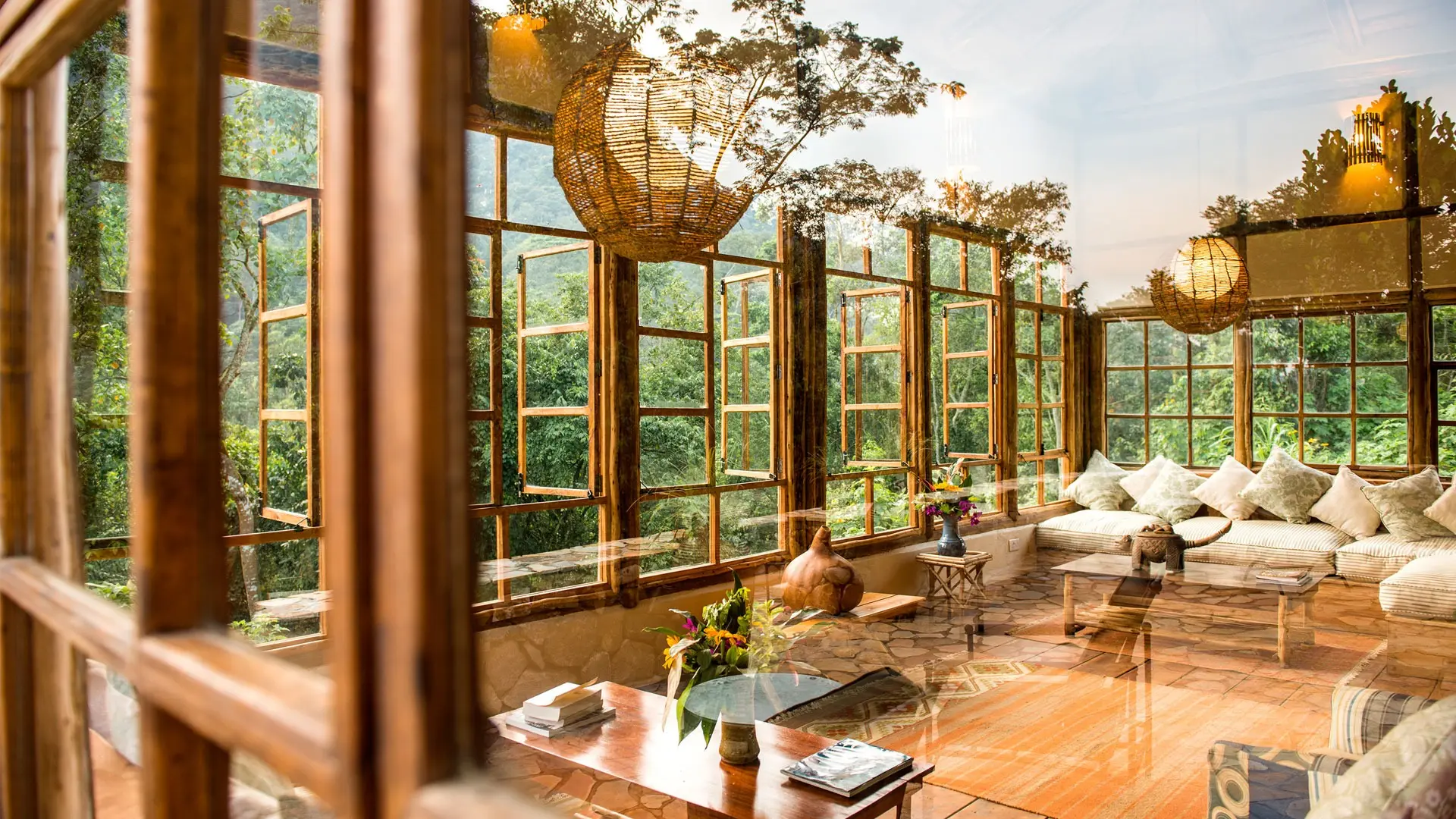
After a day filled with trekking and wildlife viewing, a comfortable stay is essential to refresh and restore your energy. You’ll find various accommodation options near gorilla trekking destinations ranging from luxury resorts to budget lodges.
Luxury accommodations close to Bwindi Impenetrable National Park include Volcanoes Bwindi Lodge, Sanctuary Gorilla Forest Lodge, Clouds Mountain Gorilla Lodge, and Nkuringo Bwindi Gorilla Lodge. Budget options include Gorilla Valley Lodge, Nshongi Campsite, Wagtail Eco Safari Camp, and Buhoma Community Rest Camp.
Beyond Gorillas: Uganda’s Wildlife and Safari Options
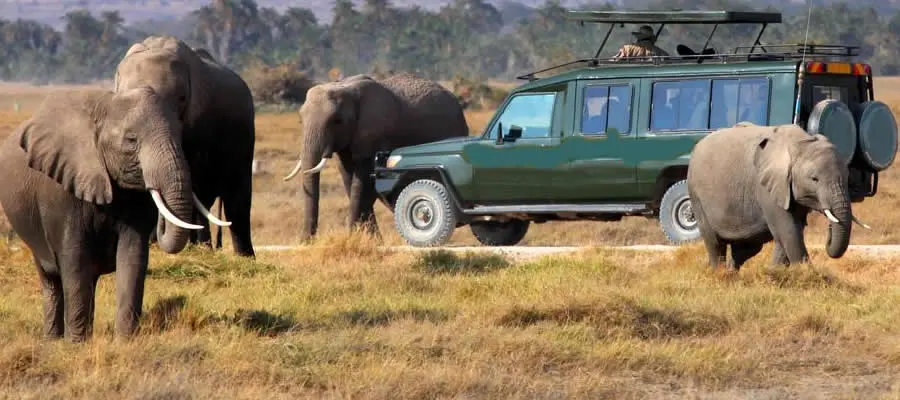
Although gorilla safari is a huge attraction, Uganda’s wildlife wonders extend beyond that. The country is a vibrant tapestry of diverse wildlife and safari experiences that are worth exploring. Chimpanzee trekking in Kibale National Park, game viewing in Uganda’s savannahs, and interactions with locals are just a few of the other experiences you can enjoy. Each of these encounters offers a unique perspective of Uganda’s rich biodiversity and makes your trip even more rewarding.
Primate Pals: Chimpanzee Trekking and Golden Monkey Tracking
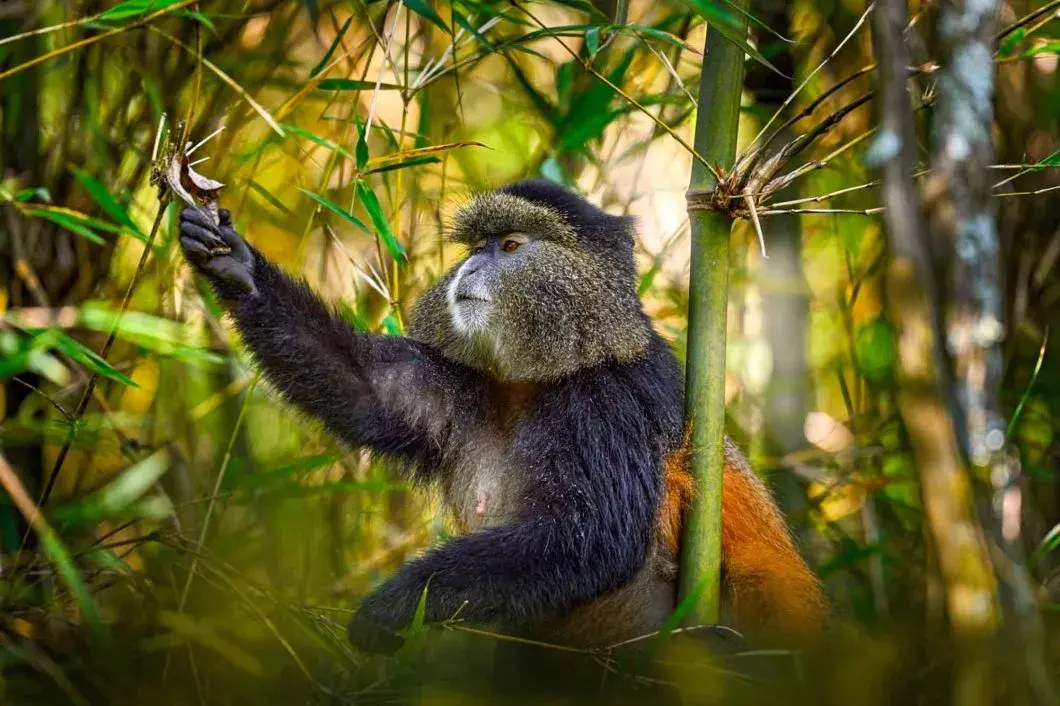
Uganda is a primate paradise, home to various species of monkeys and apes that are as captivating as the mountain gorillas. Some of the primate species you can encounter in Uganda include:
- Chimpanzees
- Baboons
- Colobus monkeys
- Golden monkeys
- L’Hoest’s monkeys
- Red-tailed monkeys
One of the best places to have an intimate encounter with our closest relatives in the animal kingdom is Kibale Forest National Park, where you can go chimpanzee tracking. Queen Elizabeth National Park is also a great place to watch primates as they feed on scrubs, leaves, and insects.
The Big Five and Beyond: Game Viewing in Uganda’s Savannahs
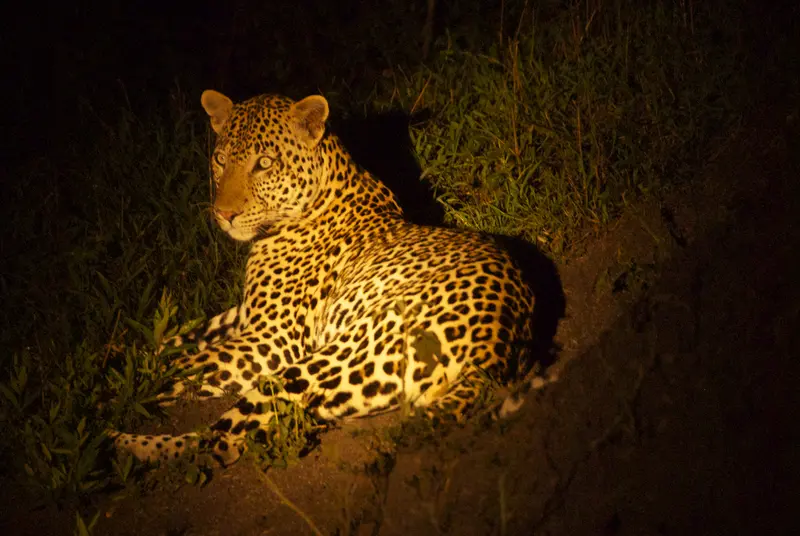
Uganda is endowed with dense jungles, savannah grasslands, mountains, crater lakes and gorgeous scenery. When you’re not gorilla-watching, you can go on wildlife safaris to Queen Elizabeth National Park, Kidepo Valley National Park, and Kibale Forest National Park. Each of these boasts an array of wildlife including elephants, hippos, buffalos, chimpanzees, warthogs, Uganda kobs, kudu, duikers, leopards, and African golden cats.
Murchison Falls National Park and Lake Mburo National Park are not to be left behind. Murchison Falls National Park is home to tree-climbing lions, giraffes, hyenas, and various bird species. You can go on a game drive or boat trip to view these animals and enjoy the scenery.
Lake Mburo National Park is absolutely stunning and offers fantastic wildlife viewing opportunities. Lake Mburo Park is one of the few parks that allow night game drives where other wildlife come to life.
Conservation Efforts and Community Impact
Gorilla trekking is more than just a thrilling adventure; it’s also a potent conservation tool. The revenue generated from the gorilla permit you purchase is utilized for the protection of gorillas and their habitats, as well as community development projects.
Gorilla and chimpanzee trekking also offer employment opportunities for the locals ultimately improving their livelihoods and those of the community at large.
Tailoring Your Trek: Customized Tours and Experiences
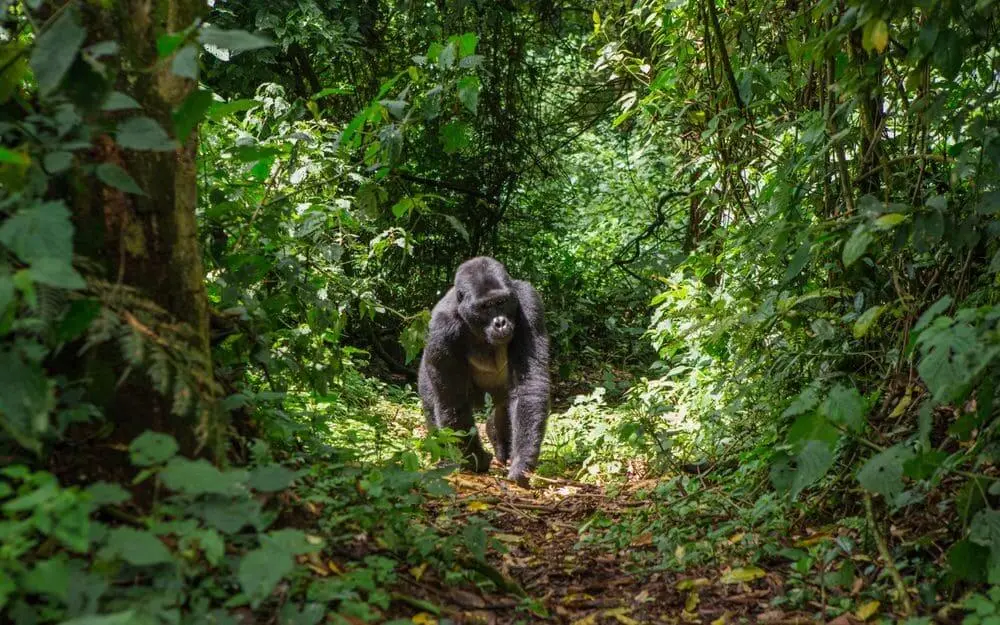
Personalizing your trip allows you to shape your adventure according to your desires and means. It provides you the flexibility of choosing the duration, lodging choices, and any additional activities you wish to include in your schedule.
To arrange a customized tour, follow these steps:
- Determine your desired travel dates and the duration of the tour.
- Contact a reputable tour operator that specializes in gorilla tours in Uganda.
- Discuss your preferences with the operator, including your budget, accommodation preferences, and any additional activities you wish to include in your itinerary.
The operator will then create a customized itinerary based on your preferences and share a detailed quote. Once you’ve reviewed the itinerary and made any necessary adjustments you can confirm your booking by paying a deposit. The operator will handle the arrangements on your behalf.
Summary
Gorilla trekking safari in Uganda is more than just a wildlife encounter; it’s an adventure that stirs the soul and sparks a deep connection with nature. From planning the trek to obtaining a gorilla permit, and gearing up for the action, every step of this journey is a thrilling experience in itself.
By choosing to embark on this adventure, you aren’t just investing in a memorable experience but also contributing to gorilla conservation efforts and local community development. Gorilla safari, thus, exemplifies the perfect blend of adventure, conservation, and community upliftment. It’s a journey worth undertaking.
Frequently Asked Questions
Which Month Is Best for Gorilla Trekking in Uganda?
For the best possible conditions for gorilla trekking, plan to visit Uganda between December and February, or June and August.
Is Uganda or Rwanda Better for Gorilla Trekking?
Rwanda is generally the better option for gorilla treks as Volcanoes National Park offers easier terrain and more trails. In contrast, Uganda’s Bwindi Impenetrable forest is extremely thick and steep and has fewer challenging trails. Securing a gorilla permit in Rwanda is also costlier as opposed to the Ugandan permits.
How Can I Book a Gorilla Trekking Tour in Uganda?
Booking a gorilla trekking tour in Uganda is easy. Simply contact a specialized tour operator to plan your trip and obtain a gorilla permit. They will also help you arrange accommodation and transportation based on your budget and preferences.
